Einleitung
Viele Nutzer des BCG800XL SmartGrinders klagen über eine Blockierung oder Verstopfung und ein grausames Getriebestolpern, Klackergeräusch während des Betriebs. Das passiert üblicherweise wegen eines abgenutzten Flügelrads oder - weniger häufig - wegen eines abgenutzten Antriebsrades. Diese Anleitung zeigt, wie man dies überprüft und wie man das Flügelrad ersetzt, wenn es beschädigt ist.
Bitte schaue dir zuerst das folgende Video an, Breville Troubleshooting page um sicher zu gehen, dass ein Austausch des Flügelrads notwendig ist.
Breville verkauft unglücklicherweise keine Ersatzteile, daher ist diese Anleitung nur durch den Einsatz von 3D-Druck-Technologie möglich. Ich habe ein verbessertes Flügelrad entworfen für den BCG800XL und habe es hier veröffentlicht: Neues Flügelrad auf Shapeways
Hier gibt's einen kurzen Überblick über das Ersatzteil.
Diese Anleitung ist für das Modell BCG800. Wenn DU das Modell BCG600SIL oder BCG400SIL hast, dann gehe bitte zu dieser Anleitung.
ACHTUNG: Diese Anleitung gilt NICHT für die neuere BCG820XL, die ein verändertes Design hat und ein anderes Flügelrad nutzt.
Werkzeuge
Ersatzteile
-
-
Entferne den Trichter und das obere Mahlwerk. Entferne jeglichen gemahlenen Kaffee (Druckluftpistole oder Staubsauger) und schaue dir dann die Flügel des Flügelrads an.
-
Wenn das Flügelrad durch die Öffnung passt (indem man es mit dem unteren Mahlwerk einfach herausnehmen kann), dann ist ein Austausch eindeutig notwendig.
-
Ein gutes Flügelrad sollte nicht ohne weitere Zerlegung entnommen werden können und die Spitzen der Flügel sollten nicht sichtbar sein.
-
-
-
Ich habe von dem Ersatzteil ein Modell erstellt und mehrere Male in der örtlichen Bibliothek ausgedruckt. Das finale Modell habe ich unter www.shapeways.com (Siehe Link im nächsten Punkt) zum selber Ausdrucken veröffentlicht. Wenn du dir die Zeit nehmen möchtest, kannst du natürlich auch eigenes Design modellieren.
-
-
Hier ist ein Video mit Hintergrundinformationen zu dem Bauteil bei Shapeways.
-
-
-
Du brauchst eine Rätsche mit 10mm Nuss oder einen 10mm Maulschlüssel.
-
Einen mindestens 20cm langen Kreuzschlitzschraubendreher PH2, vorzugsweise mit magnetischer Spitze.
-
Sandpapier und Feile sind nur notwendig, wenn das gedruckte Flügelrad nicht vor vornherein passt.
-
-
-
Entferne den Einfülltrichter und das obere Mahlwerk.
-
Benutze das 10mm Werkzeug, um die Mutter des unteren Mahlwerks zu lösen.
-
Drehe den Knopf für den Mahlgrad auf die feinste Einstellung.
-
Merke dir die Reihenfolge, in der du die Unterlegscheiben entfernt hast, um sie später wieder richtig zusammensetzen zu können.
-
-
-
Wickle das Stromkabel ab und löse die 4 Schrauben in der Grundplatte.
-
Entferne die 4 Gummifüße.
-
Führe das Stromkabel durch das Loch in der Grundplatte, während du diese vom restlichen Gehäuse abnimmst.
-
-
-
Verwende den langen Kreuzschlitzschraubendreher PH2, um die 4 Schrauben zu entfernen, mit denen die Oberseite befestigt ist.
-
Drehe die Kaffeemühle um und hebe die Oberseite langsam ab.
-
-
-
Entferne die beiden Schrauben von der Oberseite des Displays.
-
Hebe das Display nach oben und aus dem Rahmen heraus.
-
-
-
Stelle sicher, dass der Knopf für den Mahlgrad auf die feinste Einstellung gedreht ist.
-
Nutze einen wasserfesten Stift, um eine Markierung auf allen 3 Teilen des Zahnradgetriebes zu setzen. Die gesetzten Linien müssen beim Zusammenbau später wieder zusammen passen.
-
Es gibt 4 Kunststoffhalterungen für das große, weiße Zahnrad. Ich habe mit den Fingerspitzen beider Händen unter den Rand des großen Zahnrads gegriffen und gerade nach oben gezogen, um es zu entfernen.
-
Wenn gerade Hochziehen nicht funktioniert, versuche eine Seite mit den Fingern leicht hoch zu hebeln, bis sie sich bewegt. Wiederhole es auf der anderen Seite.
-
-
-
Nimm das alte Flügelrad heraus und stelle sicher, dass die BEIDEN dünnen Unterlegscheiben darunter nicht herausfallen. Diese sind wichtig für die Gesamthöhe des unteren Mahlwerks und daher auch für die Einstellung des Mahlgrades.
-
HINWEIS: Entsorge den feinfaserigen Filzring unter dem Flügelrad. Üblicherweise ist dieser in einem schlechten Zustand. Dieses Bauteil wird nicht mehr benötigt, weil das neue Flügelrad-Design wesentlich enger am Gehäuse anliegt und ziemlich effektiv Mahlgut vom Gehäuse und der Welle fern hält.
-
-
-
Verwende Druckluft oder Zahnstocher, um den Auslaufschacht zu reinigen so lange er zugänglich ist, damit er frei von festgepresstem Kaffee ist.
-
Spüle das neue Flügelrad mit Wasser und Seife ab. Tupfe es mit einem Handtuch trocken. Dies verhindert statische Aufladung beim ersten Mahlen.
-
-
-
Es ist wichtig, dass das Ersatzteil aus dem 3D-Druck ordentlich passt. Die Toleranzen des Bauteils sind eher im Plus-Bereich.
-
Überprüfe, ob die Stifte des konischen Mahlwerk-Flügelrads gut in die Aufnahmelöcher passen. Wenn es zu eng sein sollte, schmirgele das Flügelrad etwas mit dem Sandpapier, damit wird es passend gemacht.
-
Schmirgele nicht die geraden Seitenflanken der Wellenbohrung. Wenn notwendig, schmirgele nur die abgerundeten Enden der Bohrung. Die Seitenflanken nehmen den größten Anteil der Belastung der Antriebswelle auf.
-
Der Spalt an dieser Stelle sollte mit dem neuen Bauteil sehr schmal sein. Wenn es zu eng ist, kannst Du die Spitzen leicht abschmirgeln.
-
Hier ist ein Video der Montage mit dem gedruckten Bauteil von Shapeways.
-
-
-
Überprüfe vor dem endgültigen Zusammenbau, ob das konische untere Mahlwerk und das Flügelrad mit den beiden Unterlegscheiben darunter gut auf die Antriebswelle passen. Stelle sicher, dass alle aufgeführten Bauteile vorhanden sind.
-
Die Oberkante der Antriebswelle sollte ca. 0,5 mm tiefer sitzen als die Oberfläche des unteren Mahlwerks. Wenn die Mutter angezogen wird, werden beide Bauteile eben sein.
-
Wenn das Mahlwerk zu weit über der Oberkante der Antriebswelle liegt (höher als in der Skizze), versuche die Hutmutter und die Unterlegscheiben aufzusetzen (siehe Nummer 7, 8 und 9 in der Skizze), fest anzuziehen, und dann wieder abzunehmen.
-
Wenn das untere Mahlwerk immer noch zu hoch auf der Antriebswelle sitzt, mache einen kleinen Abstecher zu Schritt 20 und komme dann wieder hierher zurück.
-
-
-
Setze das Getriebe mit den folgenden Bauteilen sorgfältig wieder zusammen:
-
Vermeide es, diese Bauteile zu verdrehen, um die Ausrichtung beizubehalten.
-
Wenn du das Getriebe wieder einsetzt, stelle sicher, dass die beiden Anschlagschrauben auf der linken Seite des schwarzen Kunststoff-Anschlags sind.
-
Richte die große Lasche an dem breiten Schlitz aus.
-
Richte die kleine Lasche an dem schmalen Schlitz aus.
-
Einmal zusammengesetzt, drehe den Mahlstärkeknopf von ganz fein bis ganz grob, um sicher zu stellen, dass alles funktioniert.
-
-
-
Fortgeschrittener Tuning-Tipp: Wenn du mehr Kontrolle über den Mahlgrad haben möchtest, kannst du die beiden Anschlagschrauben in dem großen weißen Zahnrad auf dem Foto entfernen. Du wirst den Mahlgrad dann weit über die normale Bandreite hinaus einstellen können.
-
-
-
Setze das Display zurück in seinem Rahmen und befestige es mit den zwei dazugehörigen Schrauben.
-
Setze das konische untere Mahlwerk zurück und stelle sicher, dass es ordentlich auf die beiden Stifte des neuen Flügelrades passt.
-
Setze die Unterlegscheiben ein und behalte die ursprüngliche Reihenfolge bei. Z.B.: flache Unterlegscheibe nach unten, geschlitzte Unterlegscheibe nach oben.
-
Ziehe die 10mm Hutmutter mit Linksgewinde fest.
-
Überprüfe den Knopf für den Mahlgrad, ob beide Endpositionen erreicht werden.
-
-
-
Setze die Kunststoffabdeckung wieder auf.
-
Drehe die Mühle um und verwende den langen Kreuzschlitzschraubendreher PH2, um die 4 Schrauben wieder zu montieren, mit denen der Deckel befestigt ist.
-
-
-
Setze die vier Gummifüße wieder ein.
-
Schraube die vier Basisschrauben wieder ein.
-
Wickle das Kabel wieder ein.
-
-
-
Setze das obere Mahlwerk und den Einfülltrichter (noch ohne Kaffeebohnen) wieder ein.
-
Lass die (leere) Kaffeemühle kurz laufen um sicher zu stellen, dass alles ordnungsgemäß läuft. Probiere beide Einstellungen, fein und grob.
-
Wenn soweit alles gut aussieht, gib ein paar Kaffeebohnen in den Einfülltrichter. Schau Dir das Mahlgut an und probiere es aus! Wenn irgendetwas nicht funktioniert hat, schaue dir die Problemlösungen unten an oder schau dir die Problemlösungsseite hier an.
-
Mit dem neuen Flügelrad gibt es eine Einlaufzeit von ca. einer Woche, in der das Flügelrad eine schützende Kaffeeschicht bekommt. Es wird eine leichte oder mittlere Röstung während dieser Zeit empfohlen.
-
Herzlichen Glückwunsch, dass du ein Produkt aus einem 3D-Drucker für deine Reparatur verwendet hast! Genieße deinen Kaffee! Viel Glück!
-
-
-
Wenn gemahlener Kaffee über die Auslaufrutsche hinaus rutscht, könnte der Kaffee zu trocken sein, die Feuchtigkeit ist zu gering (statische Aufladung) oder dass der Auslauftrichter zu glatt ist.
-
Um das zu beheben, kannst du mit ein wenig Speiseöl auf deinem Finger die Fläche des Auslauftrichters einreiben. Eine dünne Schicht gemahlenen Kaffees wird daran haften bleiben.
-
Die erhöhte Reibung des Mahlgutes auf dem Auslauftrichter wird die Ausgabegeschwindigkeit ausreichend verringern, so dass ein Überlauf vermieden wird.
-
Für Schwierigkeiten mit statischer Aufladung, schau hier.
-
-
-
Zu nah (beispielsweise wird das Pulver zu fein): Wenn die Mahlzähne zu nah einander sind oder sich sogar berühren (obwohl sie zentriert sind), dann ist die Schaube auf dem unteren Mahlwerk vielleicht nicht fest genug angezogen. Mit einer Ratsche und einer 10 mm Nuss kannst du die Schraube nochmal fest gegen den Uhrzeigersinn ziehen.
-
Wenn das nicht klappt, sieh dir das zweite Foto an, um sicherzustellen, dass das untere Mahlwerk auf der richtigen Höhe ist.
-
Wenn klar ist, dass das untere Mahlwerk zu hoch ist, kannst du den rot eingefärbten Bereich am Flügelrad im dritten Bild abschmirgeln. Probiere zwischendurch immer wieder, bis die Höhe dem zweiten Bild entspricht. Achte darauf, nicht zu viel abzuschmirgeln, es ist schwer, das rückgängig zu machen.
-
Zu weit entfernt: Wenn die Mahlwerke zu weit voneinander entfernt sind, und das Mahlgut nicht fein genug wird, hast du vielleicht eine Unterlegscheibe unter dem Flügelrad vergessen. Siehe Schritt 9. Zusätzlich kannst du eine der beiden Unterlegscheiben über dem unteren Mahlwerk rausnehmen und die Schraube nicht ganz so fest drehen.
-
Breville verschickt auch passende Unterlegscheiben, wenn man ihnen schreibt.
-
Zuletzt können beide Probleme auch auftauchen, wenn die Anordnung in Schritt 12 sich verändert. Wenn das der Fall ist, musst du wohl das obere Mahlwerk nochmal abbauen und einstellen. Das ist schwer, aber machbar. Ich empfehle, sich die alte Anordnung zu markieren.
-
-
-
Wenn es sich im Betrieb grausam anhört (auch ohne Bohnen) wie hier: https://www.youtube.com/watch?v=PcQcbHIP..., dann ist es möglicherweise ein beschädigter Drehmomentbegrenzer oder ein abgenutztes Antriebszahnrad. ZUR INFO: Die Situation im Video ist das Ergebnis eines Steinchens, das im Mahlwerk steckengeblieben ist.
-
Ich beschreibe jetzt nicht den kompletten Vorgang, um das Gerät zu zerlegen. Ich arbeite mich bis zum Schritt 9 vor. Im Bild sind 4 Schrauben mit Unterlegscheiben und 2 Schrauben auf dem Sensor zu sehen. Wenn diese gelöst werden, bist du auf dem besten Weg, das Getriebegehäuse näher untersuchen zu können.
-
Die Reparaturmöglichkeiten sind noch nicht so gut ausgelotet, wenn du also eine Beschädigung feststellst und erfolgreich reparieren kannst, schreibe unten einen Kommentar dazu. ZUR INFO: Breville hat einen Reparaturservice für rund 90$ und das wird in dieser Situation wahrscheinlich die beste Lösung sein.
-
Der Drehmomentbegrenzer könnte zu reparieren sein, indem man die beiden Federn ca. 2mm auseinander zieht. Das sollte den Drehmoment erhöhen, ab dem er anfängt, durchzurutschen.
-
Für das rechte Antriebszahnrad gibt es eine Bezugsquelle, die von einem User gefunden wurde (vielen Dank an Dave Gordon!): Es konnte noch nicht bestätigt werden, dass es wirklich funktioniert, aber der Preis ist ziemlich günstig, wenn du es also ausprobierst und es funktioniert, hinterlasse unten einen Kommentar für uns!
-
-
-
Gelegentlich berichten Nutzer von statisch aufgeladenem Mahlgut, dass den Gesetzen der Schwerkraft zu trotzen scheint. Es schwebt in der Luft und haftet sich an alles mögliche und hinterlässt so eine Sauerei!
-
Häufig erledigt sich das von selbst, wenn das Flügelrad einige Tage in Betrieb gewesen ist. Es bleibt dennoch ein Mysterium, ich glaube, dass das eher in trockenen Klimazonen auftritt, kombiniert mit bestimmten Kaffeebohnensorten im Zusammenspiel mit dem neuen Flügelrad.
-
Um das zu beheben, schrubbe das Flügelrad mit einem Schwamm oder einer Bürste, spüle es ab und tupfe es mit einem Handtuch ab, bis es wieder trocken ist.
-
Das bisschen Feuchtigkeit scheint die statische Aufladung dauerhaft zu beseitigen. Ich vermute, dass das Phänomen auftritt, bis das Flügelrad von selbst eine Kaffeeschicht erhält und somit statische Aufladung verhindert.
-
Siehe auch hier.
-
-
-
Manche Bohnensorten, besonders die Sorte "so stark geröstet, ich bin fast Kohle" könnten zu ölig sein. Diese Eigenschaft führt dazu, dass der Kaffee nicht zu Pulver sondern zu einer "Paste" verarbeitet wird. Das ist natürlich schlecht, weil es dann in Klumpen oder gar nicht ausgeworfen wird.
-
Verklumptes Mahlgut führt häufig dazu, dass der Siebträger überlauft und eine Sauerei hinterlässt. Ich vermute, da die größeren Pulverpartikel ein höheres Gewicht und auch eine größere Masse haben, dass diese mit mehr Schwung aus der Ausgaberutsche herauskommen.
-
Wenn du das obere Mahlwerk entnimmst und auf dem Flügelrad eine schöne gleichmäßige schwarze Oberfläche zu sehen ist, dann ist das ein Hinweis auf dieses Problem.
-
Die Lösung: Säubere die untere Kammer oder löse zumindest die verklumpten Kaffeereste und wechsle auf eine andere Kaffeesorte.
-
Diese Schritte sollten dich komplett bis zum Wiederzusammenbau geführt haben. Angenommen, das Flügelrad war die Ursache, wird nun alles wieder funktionieren. Wenn du weitere Probleme hast, schau dir die Tipps zur Problembehebung an oder schreibe einen Kommentar für weitere Hilfe.
255 Kommentare
Excellent repair guide! Thank you for sharing the process and design. Cheers
joepompa -
Thanks Joe! I had a lot of fun making it. Cheers to you too.
hi! thank you so much for this guide! I purchased the 3d printed impeller from shape ways and it fit beautifully! I'm still having issues with the grinder though- it will now grind through once at whatever volume I have it set at, but then when you try to grind again, it makes a high pitched sound similar to the one it makes when out of beans. If you disassemble and reassemble the burrs, it will do the same thing again- grind through one cycle then stop. Any ideas???
Hi Patrick,
I wonder if there is a problem with the hopper. When you remove the hopper after the problem you're seeing happens, there should be at least a tablespoon worth of beans on top of the burrs waiting to be ground. If this is not the case, then I suspect it's the hopper not letting beans get through. You can test your hopper by holding it over a bowl and twisting the locking/unlocking knob. The beans within should flow through freely into the bowl. If this is OK, then next, perhaps make sure it's locking into place properly on the grinder. Something could be getting in the way of the locking mechanism.
Any chance you could share the STL file on Thingiverse.com or something similar? I've got my own 3D printer and would love to give this a whirl.
Lucas -
Sorry friend. I haven't even made back enough to cover the CPA that I'm gonna have to hire just to help me navigate the maze of tax implications from selling an item on shapeways. I'll consider it after I break even OK.
For anyone not trying to buy the $25 part, here’s the STL link and cheaper option:
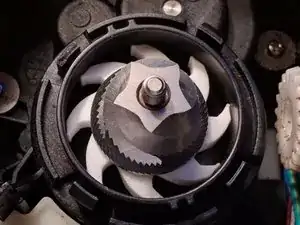
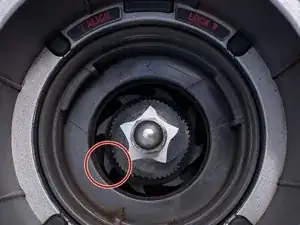
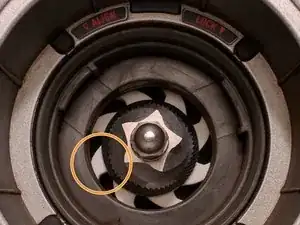
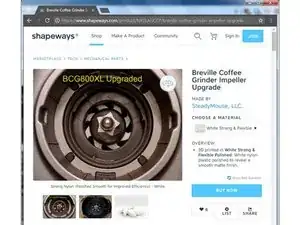
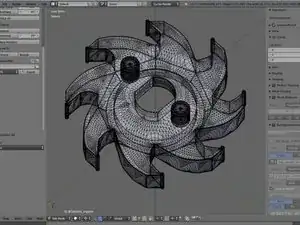
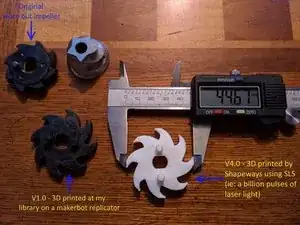
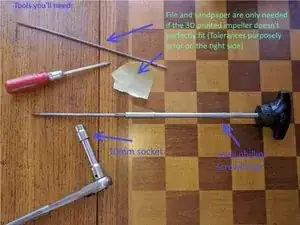
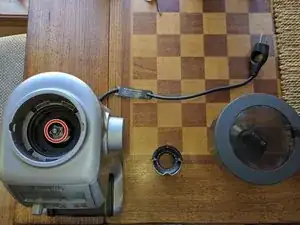
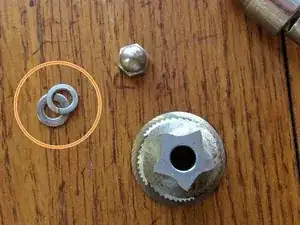
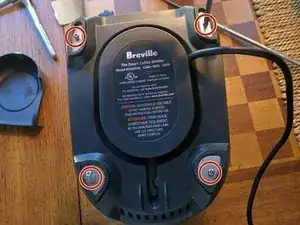
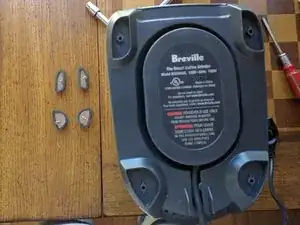
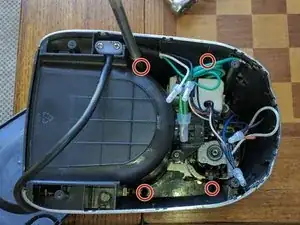
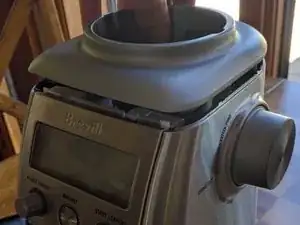
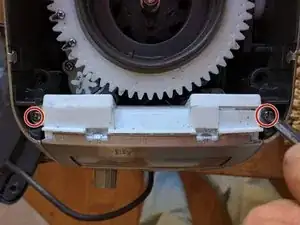
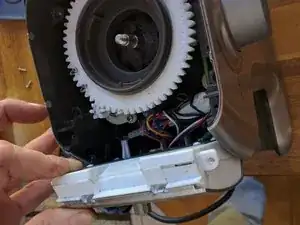
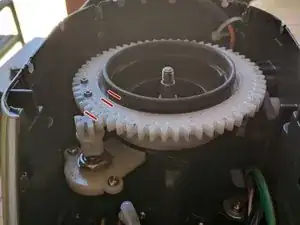
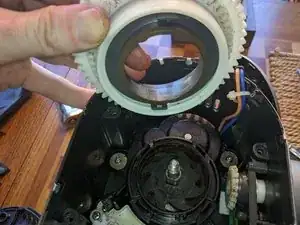
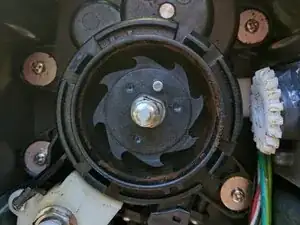
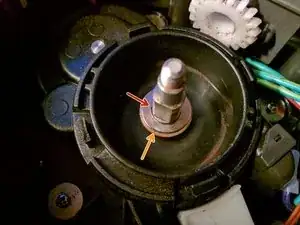
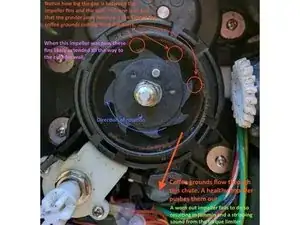
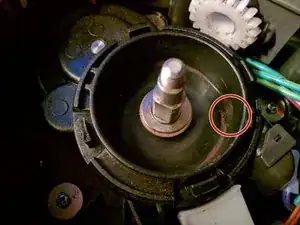
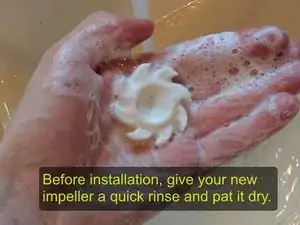
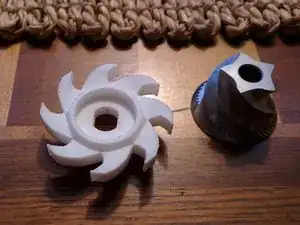
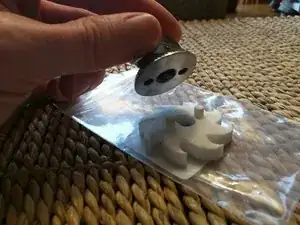
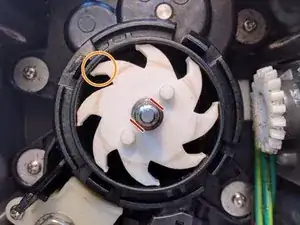
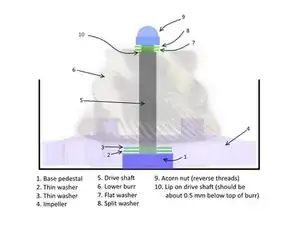
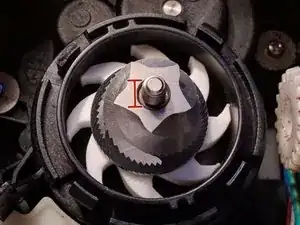
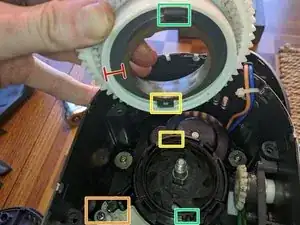
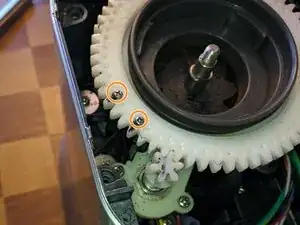
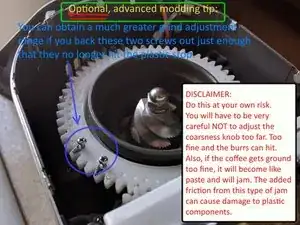
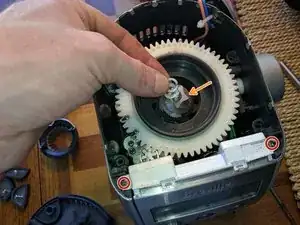
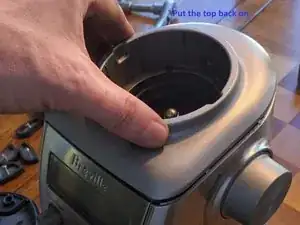
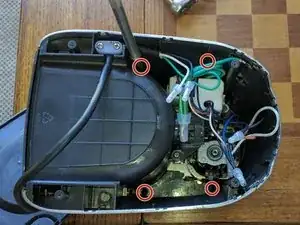
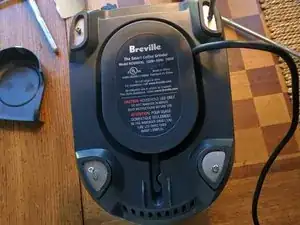
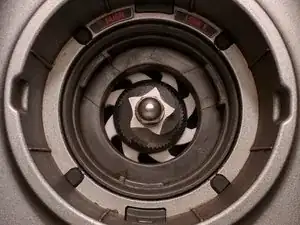
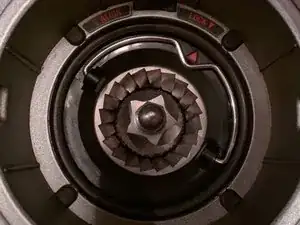
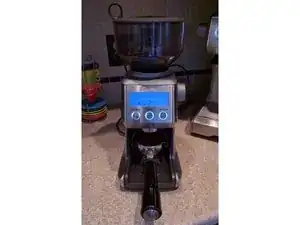
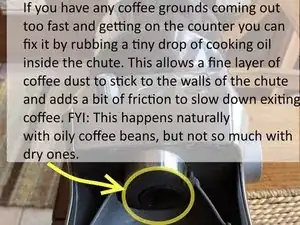
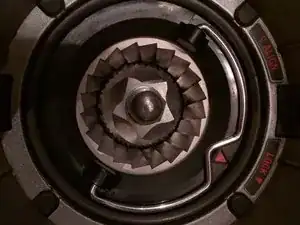
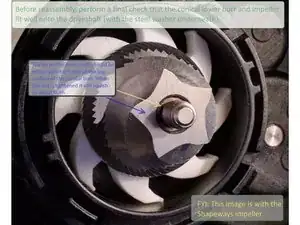
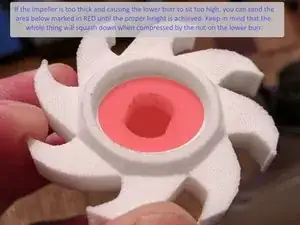
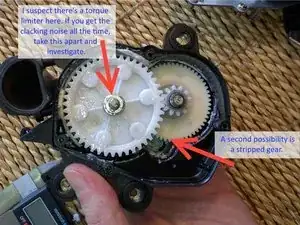

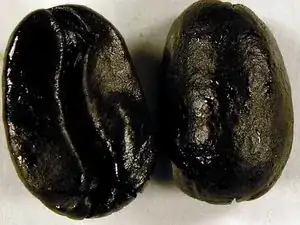

Hi, my stainless steel grinder impeller is not pushing out the grinds either, just wondering if you have any ideas why?
J M -
It could be that the beans are just too dark for this grinder. See Step 21 for example. When roasts are ultra dark, they tend to make a paste that clogs everything and a lot of grinders cannot handle it. If that’s not it, the ShapeWays impeller does do a better job expelling grounds since the blades go all the way to the edge of the cylinder. In that case, you are more or less doing an upgrade rather than a repair. Changing beans is still probably easier.
Ben Gottemoller -
I have a BCG820. The impeller is NOT REAlly steel. It’s simply a kind of “armor” that just covers the top. It makes it LOOK like the impeller is steel, but it’s not. Underneath it is a very similar plastic impeller. Mine started giving me problems about a month or two ago.At around the two year mark from date of purchase.
I purchased one of the 3D printer impellers for the BCG800. I know someone already tried it on an 820, but I want to try myself and see how it fits. My grinder is not functional at all anymore because of the impeller. The burrs are in great shape, but it just doesn’t push out the coffee anymore. Some signs that this is happening to your grinder are that it starts to take it longer to grind the same amount of grams of coffee beans than before. It use to take my grinder around 18 seconds to graind 16 grams. Now it takes it close to 40 seconds. Also, if I put in 10 g of beans, I only get around 8.5 g of ground coffee.
adolfox -
Did the impeller fit on the 820?
If yes, did it fix the issue?
cpcp -
The new metal “impeller” (it’s actually an expeller as it blows the grinds out the side vent) is total bunk. It doesn’t reach the sides of the cavity nor does it go all the way to the bottom of the cavity. (The plastic insert under the metal keeps if about 3 mm from the bottom).
Dark oily beans may worsen the problem but that’s not the whole deal. I roast my own beans, light-medium roast (below second crack). I set the grinder to 3 clicks above absolute zero before I ever add any beans. This makes about a perfect espresso grind as I get a 25 to 30 second pull after packing to 30 to 35 lbs.
At this setting, by the second use, you can hear the motor struggling. (I believe they’ve also gotten some motors made with cheap copper windings and it’s now under powered.) That, along with the lousy impeller, this is not a grinder for anyone who wants to make espresso properly. After a few weeks to a year of use (I’ve gone through 3 Barista Express and a BCG820) the motor drive gears will strip and you’re done.
dsm6855467 -
Sounds like you know your stuff. Thanks for commenting. When I first heard the newer BCG820 had that redesigned metal clad impeller, I though Breville had finally fixed things up for everyone. It is really unfortunate they went through that redesign without making proper improvements. Just simply extending the blades to the edge of the cylinder reduces the torque on the motor, and reduces the friction that wears out the impeller. The average density of grounds in the chamber during grinding drops down because the impeller stays ahead of the game rather than getting backed up. That is probably the main reason the 3D printed design has done so well. My BCG800XL was warrantied back in 2013, I replaced the impeller with my 3D printed design in 2016, and is still going strong. I did have to tighten the torque limiter this year, but otherwise so far so good.
Ben Gottemoller -
Don't get too excited, the 820 still has a plastic impeller. It's just covered with stainless steel that doesn't really solve the problem. I had the old grinder and they sent me the new one under warranty bc of the old impeller. Same issue. And I clean this one regularly. It is nice that it's easier to disassemble and clean. You can actually remove the Burr easily. But still get clumping. So you make an impeller for the 820?
Stephen Brown -
In agreeance with Stephen, do not attempt this repair on the 820 unless you have a seperate custom made impeller. The 800’s will not work and after grinding it down with a dremel, it still jammed. Breville will not send you the part which frustrates me even further.
I’m going to work on a 3D printed one soon, but for the time being, don’t bother. Go buy a Sette.
Paul Dentel -
Thank you for your incredible amount of work to make MY life easier….and obviously SO many others regarding the Breville Smart Grinder. I have had theBCG800XL since about 2012 or 2013 and just about a month ago started getting that Rat-a-tat sound. Once I saw your review on YouTube and heard you explain the sound I was convinced I had the same problem. I have since ordered two of the impellers for my grinder. My next question is in regards to the same machine: Is there any source available for replacing the the burrs (upper and lower)? I haver purchased a used similar unit for a backup for replacement parts, if necessary and those burrs are TOAST! Scratch marks show obviously something like a rock got down that far and trashed the burrs. Any suggestions for replacement sources? Or is this another possibility for more 3D engineering? Please help by responding, thanks.
segue3@comcast.net -
Hello! Thank you for designing this part. I bought it and a week later, I received the part. It installed with no problems, and it works like a charm. The clearance around the shaft is very tight, so I had to press it down onto the shaft, but it fit perfectly. Now my Breville Grinder is better than ever, and I recommend this fix to anyone. Thanks so much for all the design work, instructions, and for making the part available.
Neal Patel -
I also have the bcg820 and on a recent bag of Starbucks oily French roast, it started to clack. I took it apart, but the black ring gear assembly would not release with reasonable force. So I left it in place, but could see coffee impacted around the impeller. In the days before the failure, coffee was coming out in compacted lumps instead of powder. As I understand it, the clacking sound is the clutch slipping to protect the motor, which is a good thing. For a plastic machine, this one seems solid. Anyway, I used compressed air and a wire (a zip tie would be ideal) to clean the coffee out of the outlet channel and around the impeller. I think it may have had some blockage even before the French roast, and then the oilier coffee began a death spiral. I reassembled it all and worked better than it had for some time. Take away: if you notice any clumping of coffee in your portafilter, stop and clean your machine's outlet chute and around the impeller. Run some white rice through the grinder to scour oils etc
John Gudmundson -